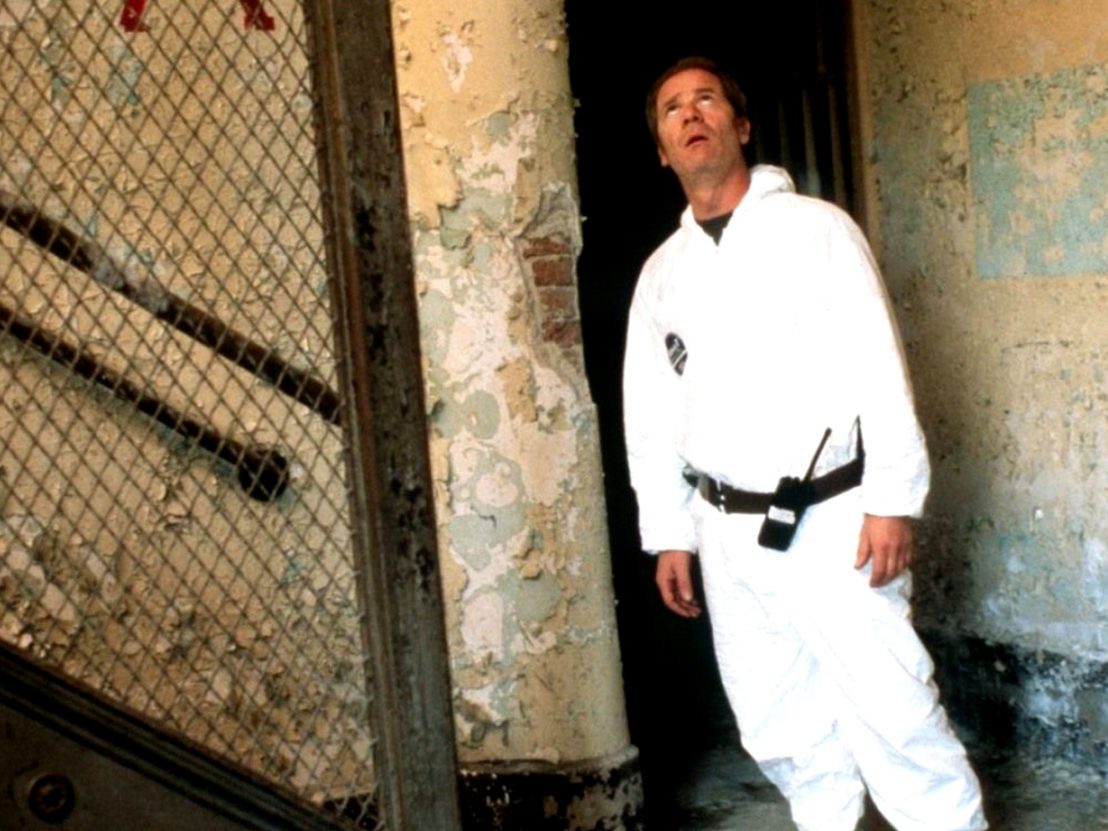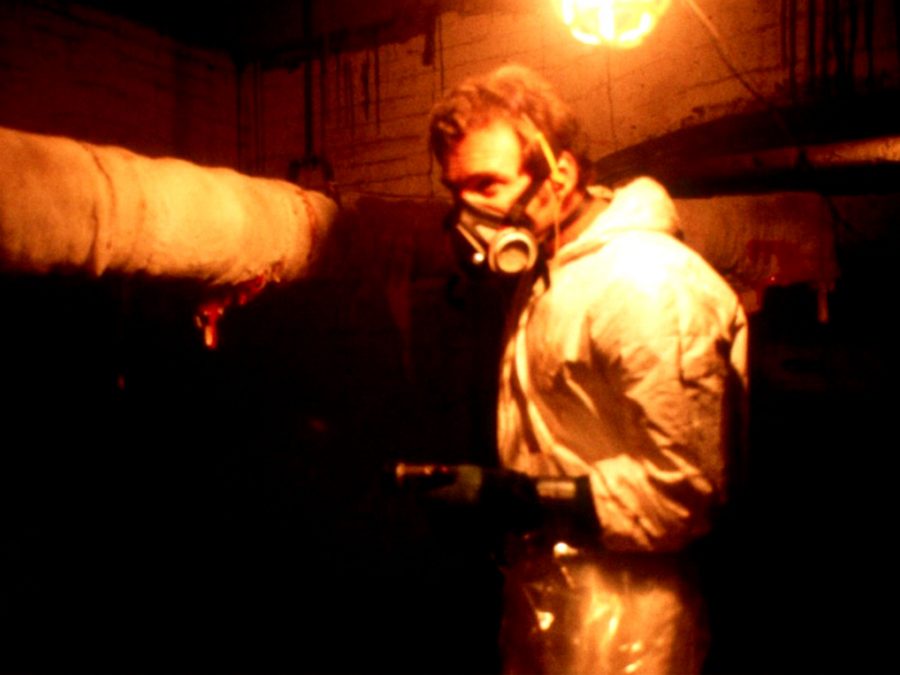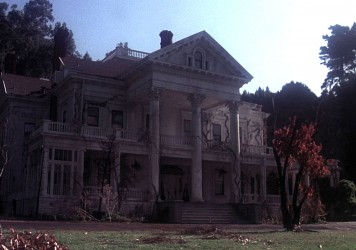
When Brad Anderson’s Session 9 was released back in 2001, critics were unsure what to make of it. The film failed to connect with audiences (it made just under $2m at the box office), who were primed for the instant gratification of a slasher flick. When viewed today, however, Session 9 feels particularly pertinent in its depiction of one of the biggest issues of our time: toxic masculinity.
The film follows a small crew of workers who have been called to a job at an abandoned mental asylum. Led by Gordon Fleming (a career-best Peter Mullan), the men must move past their petty in-fighting and clear the asylum of asbestos within a week in order to collect a $10,000 bonus. Director Anderson was able to shoot at the real-life Danvers State Mental Hospital, a derelict facility which at its peak housed more than 4000 patients and staff while pioneering in controversial techniques such as repressed memory therapy and lobotomisation.
“In the 1930s it was so overcrowded that they had patients sleeping in the subterranean tunnels,” Anderson notes on the DVD commentary. This gives the film an unsettling atmosphere of dread, with the shivery cast fully aware they were walking through the halls of a building that had seen unspeakable horrors. There’s even rumours that homeless people, many of whom were ex-patients, could be heard walking through the vast 700,000 square foot asylum during filming.
Session 9 clearly has aspirations to be the spiritual successor to Stanley Kubrick’s The Shining, containing ghostly visions, Kubrickian techniques such as dissolve cuts and the one-point perspective, and a soundtrack comprised largely of nerve-jangling piano. The intentionally distorted audio mix and almost alien manner in which the camera stalks the characters also calls to mind the films of David Lynch. But despite these obvious inspirations, Session 9 manages to forge its own identity by exploring the frailties of the male psyche in a very modern way.
From the very first scene, Gordon is shown bottling up his emotions, sitting in his car stressing over the prospect of returning home to his wife and newborn baby daughter. He looks like a ticking time bomb. Meanwhile, his snaky second in command Phil (David Caruso) tries to get one of his colleagues fired. Anderson intentionally frames this group of men as being unable to communicate their true feelings while also battling one another for power.
Uninspired worker Mike (a creepy Stephen Gevedon) describes Gordon as, “the Zen master of calm. He never loses it!”, another sign that these men are afraid to show any sign of weakness. When they do communicate with one another it’s only via bravado or lies, which serve as a smokescreen for the dark reality of what’s really going on inside their heads.
This mirrors a very real mental health crisis, with suicide being the biggest killer of British men under 45. Session 9 possesses a similar silent rage, with the asbestos feeing like a metaphor for the toxicity of how a whole generation of men have been taught to mask their emotions so noxiously. It’s as if director Anderson wanted to show how embracing the idea of what Tony Soprano referred to as the “strong, silent type” only leads to self-destruction.

Session 9 is also notable for its lack of gore. At the time of the film’s release, horror cinema was entering the torture porn era. Yet Session 9 prioritises chilling dialogue (via audio recordings from past patients), largely creating its fear through what lurks in the shadows – a brave move that has more in common with minimalist horror master Val Lewton than bloody provocateur Wes Craven. One terrifying sequence shows a worker who suffers from nyctophobia – an extreme fear of the dark – desperately sprinting through the bowels of the asylum as a power cut makes each of the lights turn off one by one.
Watching Session 9 is like stepping into somebody else’s nightmare. Mullan’s gripping central performance – built around his exhausted eyes, which serve as an indicator of the inner turmoil he is hiding – feels all too familiar, especially given the current crisis around men’s mental health. By daring to explore the horrors of toxic masculinity, carefully layering its psychological terror, Session 9 now seems like a vital, eerily prescient modern horror.
Published 23 Jul 2018

This 2014 horror is a dark and honest reflection of the film industry.

By Lewis Gordon
The first season of Jane Campion’s crime drama offers a powerful critique of patriarchal values.

By David Hayles
Burnt Offerings bears a striking resemblance to Stanley Kubrick’s horror classic.